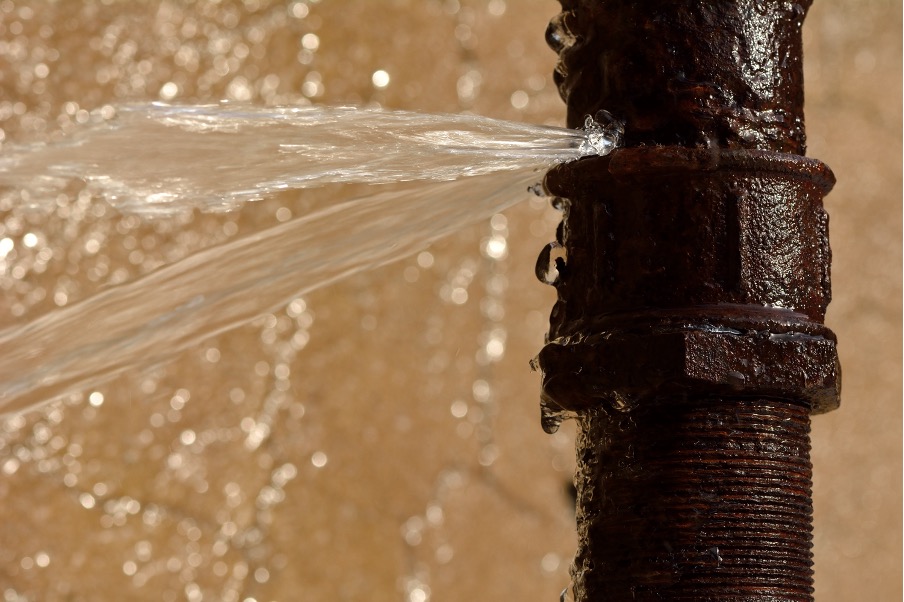Do you find yourself in search of advice around Detecting hidden plumbing leaks?

Early detection of dripping water lines can mitigate a potential catastrophe. Some little water leakages might not be visible.
1. Examine the Water Meter
Every house has a water meter. Examining it is a proven way that aids you uncover leaks. For beginners, switch off all the water sources. Make sure no person will flush, utilize the faucet, shower, run the cleaning maker or dishwashing machine. From there, go to the meter and watch if it will transform. Since no one is utilizing it, there need to be no movements. If it moves, that shows a fast-moving leak. Likewise, if you identify no changes, wait an hour or two and also inspect back again. This indicates you might have a slow-moving leak that might also be underground.
2. Inspect Water Usage
Analyze your water bills as well as track your water consumption. As the one paying it, you ought to notice if there are any discrepancies. If you find sudden changes, despite your consumption being the same, it indicates that you have leaks in your plumbing system. Remember, your water bill must fall under the exact same array each month. An abrupt spike in your expense suggests a fast-moving leakage.
At the same time, a stable rise each month, even with the same behaviors, shows you have a slow-moving leak that's additionally gradually intensifying. Call a plumber to thoroughly check your residential or commercial property, especially if you feel a warm area on your flooring with piping beneath.
3. Do a Food Coloring Examination
When it involves water intake, 30% comes from bathrooms. Test to see if they are running effectively. Drop specks of food color in the container as well as wait 10 mins. If the shade in some way infiltrates your dish throughout that time without flushing, there's a leak between the tank as well as dish.
4. Asses Outside Lines
Do not forget to inspect your outside water lines also. Needs to water seep out of the connection, you have a loose rubber gasket. One tiny leak can lose tons of water and spike your water bill.
5. Evaluate the situation and check
House owners need to make it a habit to inspect under the sink counters as well as also inside cupboards for any kind of bad odor or mold and mildew growth. These two warnings indicate a leakage so timely interest is called for. Doing routine examinations, even bi-annually, can save you from a major problem.
Extra significantly, if you understand your home is currently old, keep a watchful eye on your heating units, tubes, pipes etc. Check for stainings and also compromising as most home appliances and also pipelines have a life span. They will certainly also normally deteriorate due to damage. If you believe leaking water lines in your plumbing system, don't await it to escalate. Call a professional plumber right now so you do not end up with an awful mess in your house.
Early discovery of leaking water lines can reduce a possible calamity. Some little water leaks might not be visible. Checking it is a proven means that helps you discover leaks. One little leakage can lose tons of water and increase your water bill.
If you presume leaking water lines in your plumbing system, do not wait for it to intensify.
WARNING SIGNS OF WATER LEAKAGE BEHIND THE WALL
PERSISTENT MUSTY ODORS
As water slowly drips from a leaky pipe inside the wall, flooring and sheetrock stay damp and develop an odor similar to wet cardboard. It generates a musty smell that can help you find hidden leaks.
MOLD IN UNUSUAL AREAS
Mold usually grows in wet areas like kitchens, baths and laundry rooms. If you spot the stuff on walls or baseboards in other rooms of the house, it’s a good indicator of undetected water leaks.
STAINS THAT GROW
When mold thrives around a leaky pipe, it sometimes takes hold on the inside surface of the affected wall. A growing stain on otherwise clean sheetrock is often your sign of a hidden plumbing problem.
PEELING OR BUBBLING WALLPAPER / PAINT
This clue is easy to miss in rooms that don’t get much use. When you see wallpaper separating along seams or paint bubbling or flaking off the wall, blame sheetrock that stays wet because of an undetected leak.
BUCKLED CEILINGS AND STAINED FLOORS
If ceilings or floors in bathrooms, kitchens or laundry areas develop structural problems, don’t rule out constant damp inside the walls. Wet sheetrock can affect adjacent framing, flooring and ceilings.
https://www.servicemasterbyzaba.com/blog/how-to-detect-water-leakage-in-walls/

I discovered that piece of writing on Locating water leaks when doing a lookup on the internet. Sharing is good. One never knows, you might be doing someone a favor. I praise you for your time. Visit again soon.